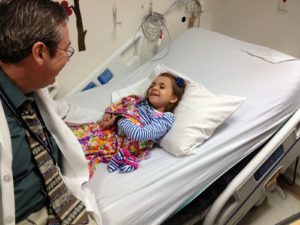
Rett syndrome (RTT) is a rare genetic neurodevelopmental disorder characterized by normal growth and development in the first 6-18 months of life, followed by a slowing or loss of those skills. Symptoms include loss of purposeful use of the hands and distinctive hand movements, slowed brain and head growth, difficulty with gait, seizures and labored breathing, and intellectual disability. The Austrian pediatric neurologist Andreas Rett, MD, first described the condition in 1966 when he observed several young female patients making repetitive hand-washing motions and then discovered similarities in their clinical and developmental histories.
Burden
Disease burden in RTT varies because the course and severity of RTT – determined by the location, type and severity of the gene mutation – is patient-specific. Generally, the quality of life (QoL) of parents and caregivers of a child with RTT, as well as the patients themselves, are significantly worse compared to those without the disease. There are several comorbidities prevalent in RTT, including cognitive disabilities and motor dysfunction, which often require full-time care.
- Patient QoL: Patients with RTT also have difficulty communicating, making it problematic for patients to explain their needs to others. Most individuals with RTT are not able to live independently because of their health needs and will remain with their families or in another setting where they can receive appropriate care for their lifespan. It is also likely that patients with RTT will be unable to perform tasks that allow for other forms of independence, such as operating a motor vehicle, cooking, or bathing themselves.
- Caretaker QoL: Caretaker QoL in RTT is similar to caretakers in other chronic illnesses and neurodevelopmental disorders. Experts believe that the psychological, social and practical difficulties of caring for a child with RTT are not completely understood, but that patient and caregiver QoL can be improved with the help of multidisciplinary experts to reduce symptomatic burden, emotional toll and burnout.
Screening
Due to the rarity of the disease and the fact that its clinical presentation aligns closely with autism and cerebral palsy, RTT is not often considered. Physicians use a highly specific set of guidelines to screen for main and exclusion factors for an RTT diagnosis, where the presence of any of the exclusion criteria negates a diagnosis of classic RTT. Examples of main diagnostic criteria or symptoms include: partial or complete loss of acquired purposeful hand skills; partial or complete loss of acquired spoken language; repetitive hand movements such as hand-wringing, squeezing, clapping or rubbing motions; and gait abnormalities including toe-walking or unsteady, wide-based, stiff-legged walk.
Diagnosis
Doctors clinically diagnose RTT first by observing signs and symptoms during a child’s early growth and development and then conducting ongoing physical and neurological evaluations. Since RTT is rare, it is important to rule out other conditions that may exhibit similar symptoms, such as autism, cerebral palsy, hearing or vision problems, and brain disorders caused by trauma or infection. If, after thorough evaluation, RTT is suspected, genetic testing can be conducted to confirm a diagnosis. The test requires drawing a small amount of blood from a vein in the arm, which is sent to a lab where technicians examine the patient’s DNA for abnormalities and clues as to the cause and severity of the disorder.
Pediatric neurologists, clinical geneticists, or developmental pediatricians should be consulted to confirm the diagnosis of RTT and may order additional testing to assist with diagnosis, including magnetic resonance imaging or computerized tomography scans, eye exams, and electroencephalograms.
Approximately 95% of reported cases of Rett syndrome can be attributed to inherited mutations of the methyl-CpG-binding protein 2 (MECP2) gene. Mutations in this gene impact neuron development and axodendritic connections, which are closely related to the clinical presentation of the disease. A positive finding of a mutation of the MEPC2 gene confirms RTT diagnosis.
Sources:
- Banerjee A, Miller MT, Li K, Sur M, Kaufmann WE. Towards a better diagnosis and treatment of rett syndrome: A model synaptic disorder. Brain (London, England : 1878). 2019;142(2):239-248. https://www.ncbi.nlm.nih.gov/pubmed/30649225. doi: 10.1093/brain/awy323.
- Fu C, Armstrong D, Marsh E, et al. consensus guidelines on managing Rett syndrome across the lifespan. BMJ paediatrics open 2020;4:e000717. doi:10.1136/ bmjpo-2020-000717. BMJ Paediatr Open. 2020;4(1). https://www.ncbi.nlm.nih.gov/pmc/articles/PMC7488790/. Accessed Mar 2, 2022. doi: 10.1136/bmjpo-2020-000717.
- Neul, J, Kaufman, W, et al. Rett Syndrome: Revised Diagnostic Criteria and Nomenclature. Annals of Neurology 2011;68(6):944-950. https://onlinelibrary.wiley.com/doi/10.1002/ana.22124















